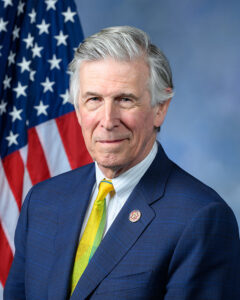
A veteran leading member of the Falls Church Planning Commission, included in an effort by consultants to the City of Falls Church and School Board to elicit comments on how to best develop the near 40 acres annexed to the City as part of the deal to sell its water system to Fairfax County, said Monday that if commercial development of 10 acres of the land was on the area nearest the West Falls Church Metro station, she would have no opposition to whatever height or density variances might be sought.
That’s because that portion of the 40 acres, roughly constituting what is now the football field at George Mason High School, has no residential neighborhoods around it, at all, she noted.
The Planning Commission former chair and current influential member Ruth Rodgers said that she would not like the idea that the 25 percent of the land that will be available for commercial development use (under terms of the sale) will be isolated from the City if goes over there. On the other hand, if proximity to the Metro station can provide for a highly-lucrative use, necessary height and density matters would not be a problem for her, she said.
Rodgers made her comments in a small group meeting, one of a half dozen or so hosted Monday by the consultants from Cooper Carry and VHB. The succession of meetings were held at the School Board central office to elicit ideas about the development of the land from a variety of small groups of Falls Church so-called “stakeholders,” including educators, City staff personnel, leaders on boards and commissions and some young adults with children coming into the school system.
The exercise was a follow-up to the June 6 well-attended public “visioning meeting” on how to best develop the property, whose nearly 40 acres under the terms of the water sale must be 75 percent for educational use and 25 percent potentially commercial. The property is currently home to the City’s high and middle schools.
Questions like attitudes toward the height of a new high school, or the potential reintegration of the high school and middle school in the same building, and of the location of the commercial component were kicked around. There was the suggestion of an expanded performing arts center on the site which could be used by both schools as well as by the general public.
The fact that the sessions Monday were initially intended to be “by invitation only” did not sit well with some in the community who complained on blogs that since everyone’s tax dollars contributed to the exercise, then everyone should be considered a “stakeholder.” Issues of transparency and inclusiveness were cited.
But even though not invited, the News-Press showed up and was welcomed as a participant in one of the sessions that included Rodgers and a parent of two who will soon be entering the Falls Church school system.
Paul Moyer, director of planning of VHB, and Allison Bickers, an architect with Cooper Carry, conducted the sessions. An earlier session included mostly members of the City Hall staff, including Parks and Rec director Danny Schlitt, Revenue Commissioner Tom Clinton, Planning Department’s Paul Stoddard and others.
The purpose of the smaller sessions, following the large session attended by over 200 at the Henderson Middle School cafetorium, was to get a more nuanced sense of what the public wants and fears from the development of the site.
The consultants have until July 7 to complete a report that will be presented to the Falls Church City Council at its first meeting of the new fiscal year (that begins July 1), and that is intended to provide guidance to the Council for its preparation of the “request for proposal” to be sent out far and wide.
The Council last month turned down the option of accepting an offer from Clark Construction for a comprehensive development of the site that included a promise that the construction of a new high school for $100 million would be guaranteed in the first phase of development of the site, to be paid for by the development of its commercial 25 percent.













